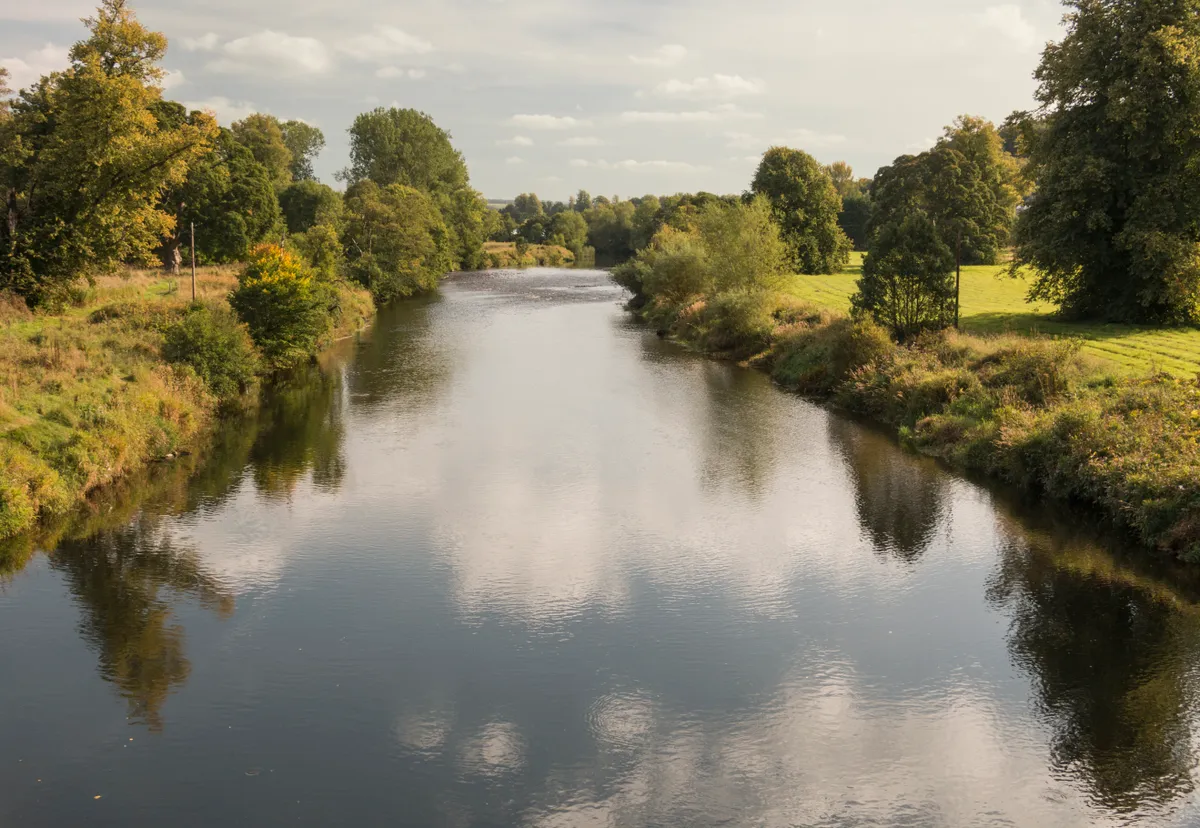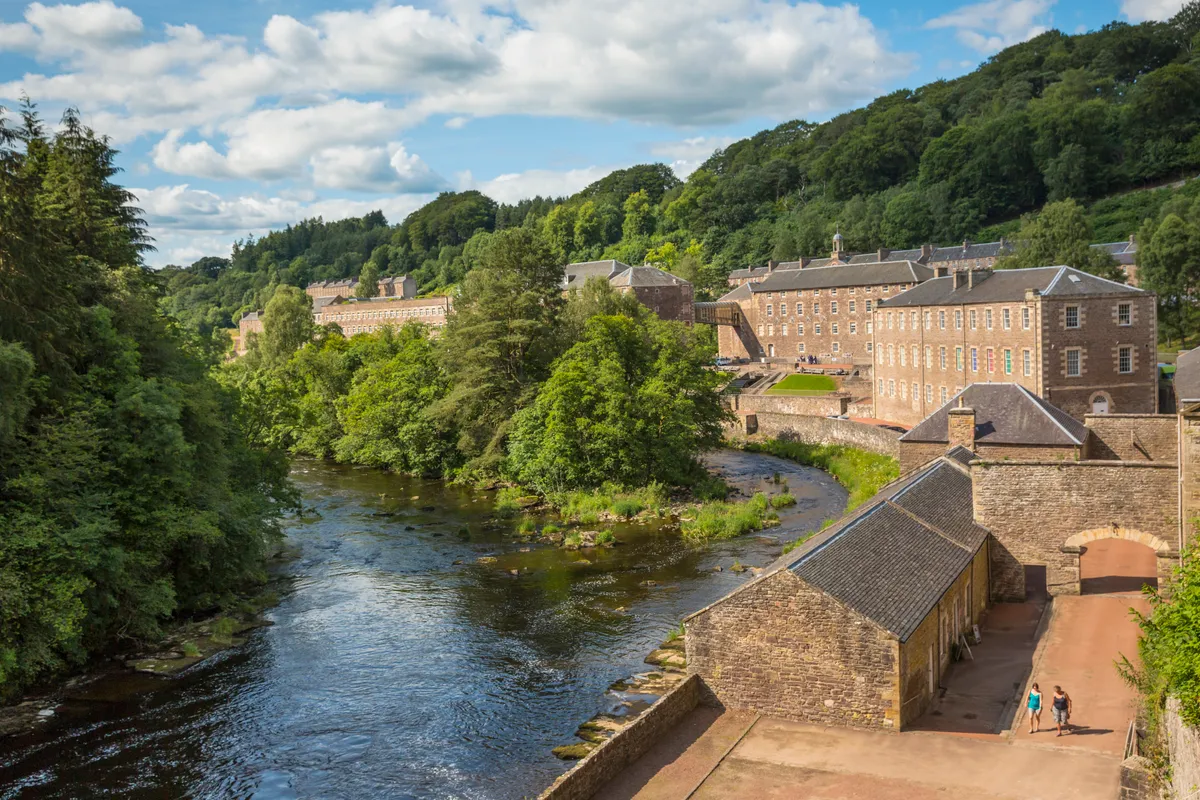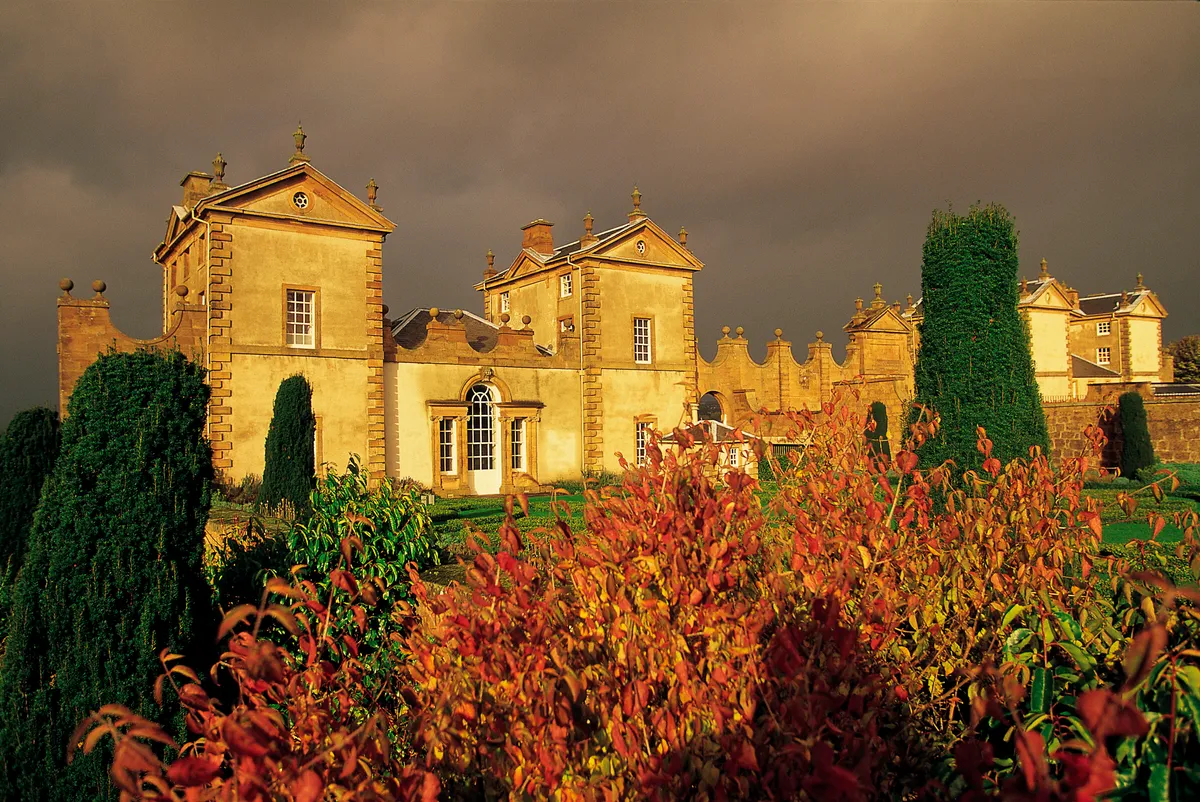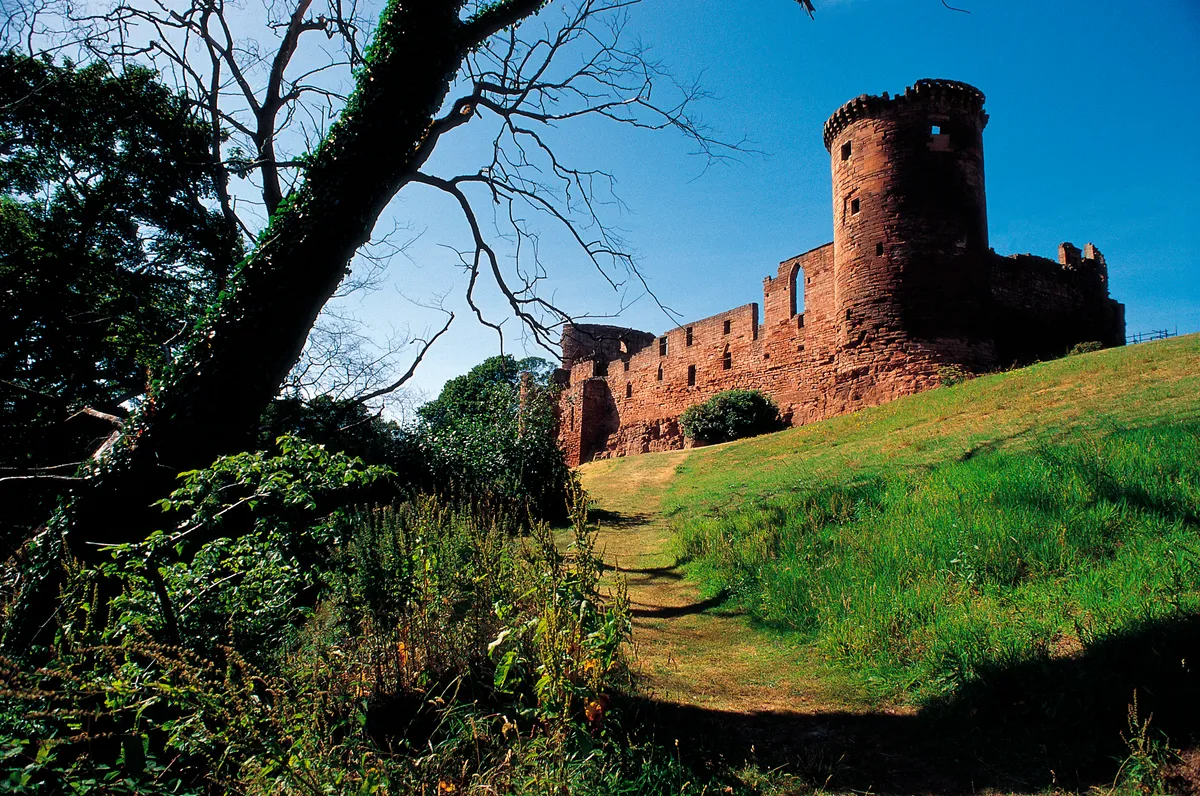Lanarkshire is shoehorned between Glasgow and Edinburgh and dangles like a heart-shaped diamond above and below those two famous cities. The county is an incredible mixture of upland beauty, rolling hills, rich agricultural farmland, attractive villages and important industrial towns that wear their heritage with pride.
Even better, you’re never far from water, for the River Clyde cuts through the heart of the county. In short, Lanarkshire has something to appeal to every visitor, from the wildlife lover, those interested in history, walkers and cyclists and indeed, anyone who simply wants to get away from it all and slowdown in an undeservedly overlooked part of Scotland.

Getting to Lanarkshire is easy as it is just a short distance from Glasgow and Edinburgh and many sites are reached by bus or train from both cities, allowing you to explore the area by public transport and on foot.
Explore the dramatic scenery of Lanarkshire in our travel guide, including the best places to visit, stay and eat.
Best historic market towns
The best place to start a holiday in Lanarkshire is in the town that gives its name to the county. Lanark is a historic market town and a Royal Burgh set in a valley above the River Clyde. For romantics it’s a must-visit because this is where Braveheart William Wallace is believed to have married his sweetheart at the impressive 13th century St Kentigern’s. The busy agricultural market held in town will give you an insight into the importance of farming to the area. The showstopper, however, is the nearby UNESCO World Heritage Site of New Lanark, which is worth exploring both for its fascinating history and the walking opportunities it provides.

The village of New Lanark was founded as a cotton spinning village in the 18th century and has been immaculately restored. Centre stage is the vast mill but the whole estate is now a bustling community. Explore the heritage of the mill, millworkers’ housing and church and then buy a bottle of local gin or some upcycled furniture at the mill shop before heading out on foot into the surrounding countryside.
New Lanark is surrounded by native woodlands with the Falls of Clyde wildlife reserve easily accessible. The stunning Falls of Clyde can be visited on a four-mile walk that follows the Clyde upstream from the imposing cotton mills and takes in a horseshoe of waterfalls and a peregrine falcon hide. The falls – whose power was harnessed to drive the mills - include the Corra Linn, a breath-taking waterfall where the Clyde falls over 30 metres to the valley floor.
For a walk with a view of what feels like much of southern Scotland, take a hike up shapely Culter Fell, outside the historic village of Coulter, to the south east of Lanark. The 10 km loop starts from the village and heads up Birthwood Lane before approaching the 747m summit from the northwest. Afterwards enjoy a well-deserved drink at the 12th century Mill Inn, located, as the name suggests, by a picturesque old water mill. The pub also serves local specialities Morag Dubh (black pudding) and Cullen Skink (a thick-set soup of smoked haddock and potatoes).
Learn about Scotland’s industrial heritage
The northern reaches of Lanarkshire should not be missed and feature Coatbridge, where the Summerlee Museum of Scottish Industrial Life offers a fascinating insight into a community once known, due to its many ironworks, as the Iron Burgh. You can go down this excellent recreation of a working mine and ride one of Scotland’s few remaining electric trams. Nearby and lying just south-east of Cumbernauld is Palacerigg Country Park. Spanning 300 hectares of uplands, grassland, woodlands, moorlands and ponds, the park is sited on a former farm and provides a haven for wildlife. Two traditionally built longhouses showcase farming crafts and displays. Birds of prey you may spot across the moors and woodland edges include quartering long-eared owls and quivering, hovering kestrels.

Lanarkshire is also home to the ‘other’ wall – the Antonine Wall that represented the northernmost frontier of the Roman empire. At Nethercroy, along the line of the wall, you will find a 6-metre high sculpture of a Roman soldier’s head. Nick-named Silvanus (the Roman God protector of fields and cattle), the carved stone is a replica homage to the ‘Distance Slabs’ which celebrated the achievements of the Roman Legions responsible for building each section of the wall.
The northern reaches of the county are also great walking territory, with the John Muir Trail cutting through from west to east along the Forth and Clyde canal. After climbing and descending Croy Hill, where the ditch of the Antonine Wall is easily identifiable, the route makes for easy walking along grassy tracks and the canal towpath.
Castles to visit in Lanarkshire
In a nation famed for its castles, Lanarkshire can hold its own. Strathaven Castle dates to the 13th century and where the ruins are said to be haunted by the ghost of the melancholic White Lady. The castle sits on a mound to the south of Strathaven, a market town well worth exploring and situated on the Powmillon Burn. Follow the route of the burn to the Boo-Backit Brig, an age-old stone arch footbridge.
Beautiful river walks
Peaceful countryside and rolling hills surround Strathaven and the neighbouring attractive village of Stonehouse. The latter is set by the River Avon, which is one of Scotland’s most delightful rivers where you have a high chance of spotting an iridescent kingfisher or a bouncing dipper above the burbling waters. An early morning walk by the river also brings the chance of spotting deer; at dusk you may strike lucky and catch the waddling outline of a badger. A three-mile walk from Strathaven leads to a ruined mill above the Spectacle E'e (eye) waterfalls. The name comes from a local legend involving a local lad who fell in love with a miller's daughter. In time-honoured fashion, father miller disapproved and forbade the union. The vengeful young man placed an eye glass in the mill's thatch, causing it to catch fire and the mill to be burned to the ground.

Once the powerful fiefdom of the Dukes of Hamilton (who helped arrange the marriage of Mary, Queen of Scots), the historic town of Hamilton is where you will find magnificent Chatelherault Country Park. More than 500 acres of woodland and countryside surround an 18th century hunting lodge that features fine Georgian plasterwork. The park is great for picnics and is also home to the stylish and newly refurbished Oaks Café. Among the 10 miles of routed pathways in the park is the Chatelherault to Low Parks Heritage Trail, a walking and cycling route between the park and the Low Parks Museum, thereby linking two of Lanarkshire’s most prestigious historic buildings. You can download an app for the trail, learn about the history of the Dukes of Hamilton and the landscape and enjoy archive images and historic footage. Afterwards, dine on local ingredients and enjoy a drink at the atmospheric Chatelherault Inn.
The Low Parks Museum is the oldest building in town and was formerly a staging coach inn for travellers moving between Scotland and England and contains original 18th century features. Famous travellers, such as Dr Johnson and James Boswell, and Dorothy and William Wordsworth are all known to have stayed here. Nearby is the Hamilton Mausoleum, built as a tomb and monument to 'El Magnifico', the name given to Alexander, 10th Duke of Hamilton. The chapel’s huge dome reaches 36 metres high and is enclosed with magnificent bronze doors guarded by two huge lion sculptures that overlook the entrance to the crypt below. The floor inside is a stunning spectacle made of beautiful marble from all over the world. Kids will love the mausoleum as it produces a 15-second echo – parents should bring ear plugs! Just remember to book before you visit as tours need to be booked in advance.

Across the River Clyde and overlooking the river, stands Bothwell Castle, the largest and finest 13th century stone castle in Scotland and another great choice for families. The castle's donjon, or tower has been described as ‘the grandest piece of secular architecture that the Middle Ages has bequeathed to us in Scotland’. Just to the north of Hamilton is the small town of Blantyre, which was the birthplace of David Livingstone. You can explore the missionary’s life and times at the David Livingstone Birthplace, from his childhood working in the Blantyre Mills at the age of 10, to his world-famous explorations in the heart of Africa.
Responsible tourism
Responsible travel and tourism is essential when visiting sites of historic or environmental importance, so that the sites are protected for future generations to enjoy.
Simple things you can do to be a responsible tourist:
- Travel in an eco-friendly way – either walking, cycling or using public transport to visit sites if you can.
- Don't climb or walk on historic sites or tamper with the ruin or building.
- Make sure you take any litter home. Litter can harm wildlife and the local eco-system.
For more practical advice on responsible tourism, visit: visitscotland.com/about/responsible-tourism
Best places to stay in Lanarkshire
Lanarkshire has delightful accommodation to suit all tastes. One unforgettable choice would be to stay within the ground of the New Lanark Mill estate. The New Lanark Mill Hotel is an award-winning conversion from an 18th century mill and you also have the chance here to dine within the charming surroundings of the peaceful River View restaurant. The hotel has a Green Tourism Gold Award.
For somewhere more secluded, you could consider the Lint Mill B&B near Lanark, which offers 4-star gold luxury bed & breakfast on a traditional smallholding farm in the rolling countryside. The farm is organic and eco-friendly and there’s a cosy wood-burner in the chilly winter evenings or relax in the pretty walled cottage garden on a summer afternoon nibbling your hosts’ home-made cakes.
The Boat House restaurant and hotel offers comfortable rooms with views across Auchinstarry Marina on the Forth and Clyde Canal which offers an excellent selection of walking and cycling routes. It is also an ideal spot to stay for access to the John Muir Way.
A good self-catering choice is the cluster of cottages on the Carmichael Estate near Biggar in the south of the county. Covering around 2,000 acres, the estate comprises ancient woodlands, deer parks, arable land and hill farm grazing. There is an excellent farm shop selling venison, beef and lamb reared on the estate while you can happily munch after exploring the grounds with cake and scones from the Carmichael Bistro and Tea Room.
For more information on visiting Lanarkshire, see: visitlanarkshire.com
Please check the latest government guidelines before travelling: visitscotland.com/about/practical-information/covid-19-recovery-phases/
